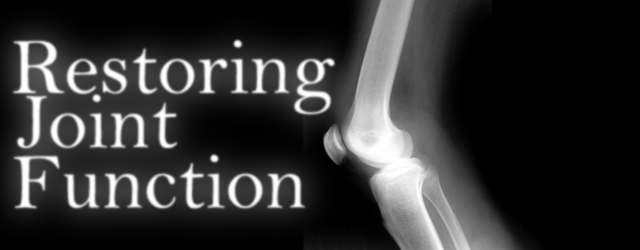
Restoring Joint Function
Finnish mobility Jedi master Jami Tikkanen recently posted a short but brilliant video talking about ‘relative joint motion’ pertaining specifically to the hip joint. Jami demonstrated a couple of mobility drills to improve hip function and thus the squat. Tell me why you wouldn’t want to improve your squat!?
In the video, Jami talked about the three planes of movement, which I mentioned in a previous article titled "Does Your Warm Up Help You Evolve?"
These movement planes break down like this:
| Three movement planes and joint actions | ||
| Sagittal plane | Frontal plane | Transverse plane |
| Flexion | Abduction | Internal rotation |
| Extension | Adduction | External rotation |
| Eversion | ||
| Inversion | ||
The Planes
The sagittal plane divides the body or segment into right and left parts. The movements are flexion and extension and are influenced by gravity. The frontal plane divides the body or segment into anterior and posterior parts. The movements are abduction, adduction, lateral flexion, eversion, and inversion. Again, they're influenced by gravity. The transverse plane divides the body or segment into upper and lower parts. The movements are rotational and encounter minimal influence from gravity. However, the movements require muscle to decelerate and accelerate motion (McArdle et al. 2006; Thibodeau et al 2006).
When squatting or in any movement, your joints shouldmove through all three planes to some degree. When a joint loses movement in any one plane, dysfunction occurs. Try an overhead squat and see if you can figure out what planes of motion you're lacking.
Before we delve into joint motion, we need to understand the difference between position and motion (i.e. a flexed position versus flexion). For example, a joint may look like it’s in a flexed position, but it’s actually moving through extension. Simply, the movement starts from a flexed position. In this scenario, the joint may never actually end up in an extended position. This is important because if a client experiences pain moving from a neutral position to an extended position, we can simply start them in a flexed position and gain extension pain free.
For example, if a client has lumbar pain moving from a standing position into extension, we could simply place the foot on to a high step. This would cause the pelvis to posteriorly rotate, ending in lumbar flexion. Extension would then be possible without ever moving into an extended position.
Relative Joint Motion
Back to Jami’s post...Jami talked about relative joint motion. Anybody wondering what he means? I’m going to try and explain it and expand on it. Along with relative motion, we have to consider real and resultant motion. What the hell are they, right?
Real motion can be described as the actual movement of the bone in space. That’s pretty simple. Just think of flexion and extension. For example, to throw a ball with your right hand, you need to rotate your trunk and arms to the right to allow the throwing arm to move a greater distance and thereby accelerate the ball to throw it further.
Relative motion is described as the movement of bones relative to each other (fancy that!?), regardless of their movement in space. For example, Jami’s first drill in the video is hip flexion. This is achieved by proximal segments moving and the distal segments remaining still. To cause relative hip flexion, Jami could have moved in four other ways. Therefore, there are five ways of driving movement into the joint. They are as follows. Let’s stick with the hip for some examples:
- Proximal still, distal moves: Standing upright and raising your knee
- Proximal moves, distal still: The first demo in Jami’s video
- Proximal and distal move in opposite directions: A squat
- Proximal and distal move in same direction, distal moves fastest: Toes to the bar
- Proximal and distal move in same direction, proximal moves fastest: A GHD sit-up (if performed correctly)
Finally, resultant motion can be described as the actual movement between bones, depending on their movement relative (there’s that word again) to each other. Their movement in space isn't any concern, but the speed of movement is, specifically the speed of proximal versus distal (e.g. when squatting, the pelvis and femur move in opposite directions; see example three above). The resultant joint movement is flexion.
Programming Around Joint Dysfunction
Knowing and understanding this information should massively affect how we view our warm ups (or exercise preparation) and how we program (i.e. what movements we include in our program on a daily basis), especially if we know we have some form of joint dysfunction. And who doesn’t?! What I’m trying to say is that there is more than one way to skin a cat! If you're getting pain in a joint through a certain plane of movement, try that movement differently (see the examples above).
If you still don’t fully understand what I’ve tried to explain (or I’ve confused you even more), I suggest you see a decent therapist. He or she will be able to assess your joint function and give you practical advice on how to warm up and restore relative motion to joints that are lacking movement in any of the three planes of motion. Just imagine being able to move pain free and think of the performance improvements that would come from moving freely in three dimensions.








